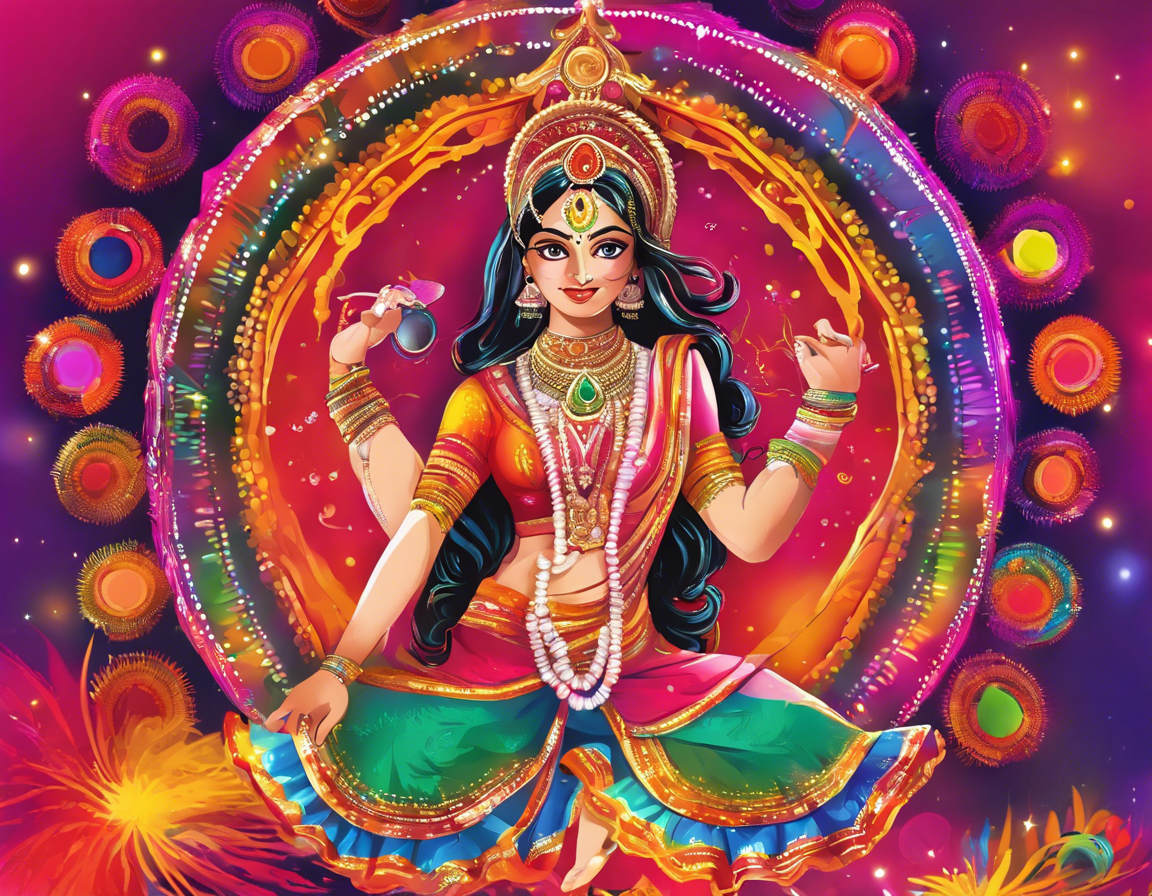Navratri, a nine-night festival celebrated with fervour and gusto in India, holds significant cultural and religious importance. Each day of Navratri is dedicated to different forms of Goddess Durga and is associated with specific colors. Wearing these specific colors during Navratri is believed to bring positivity, good luck, and prosperity. As we look towards the year 2024, here is a comprehensive guide to the Navratri colors that you can incorporate into your wardrobe for each day of this auspicious festival.
The Significance of Navratri Colors:
Navratri, which literally means nine nights, is a vibrant celebration that symbolizes the triumph of good over evil. Each of the nine days is associated with one of the nine forms of Goddess Durga. The colors associated with each day are based on the planetary placements and astrological significance, with each color carrying its own meaning and significance.
Day 1 – Grey:
Grey, the color for the first day of Navratri, symbolizes the power of reflection and stillness. It represents the calm before the storm, laying the foundation for the festive days ahead.
Day 2 – Orange:
Orange, the color for the second day of Navratri, symbolizes energy and happiness. Wearing orange is believed to bring positivity and enthusiasm during the celebrations.
Day 3 – White:
White, the color for the third day of Navratri, signifies purity and peace. It is often associated with new beginnings and cleansing of the mind and soul.
Day 4 – Red:
Red, the color for the fourth day of Navratri, represents power and vigour. It symbolizes the strength and determination required to overcome obstacles.
Day 5 – Royal Blue:
Royal Blue, the color for the fifth day of Navratri, signifies the beauty and grace of Goddess Durga. It represents serenity and tranquillity amidst the festive fervour.
Day 6 – Yellow:
Yellow, the color for the sixth day of Navratri, symbolizes joy and happiness. It is believed to bring prosperity and success to those who wear it.
Day 7 – Green:
Green, the color for the seventh day of Navratri, represents growth and fertility. It symbolizes harmony and balance in life.
Day 8 – Peacock Green:
Peacock Green, the color for the eighth day of Navratri, symbolizes new beginnings and renewal. It represents the rejuvenation of the mind, body, and spirit.
Day 9 – Purple:
Purple, the color for the ninth day of Navratri, signifies royalty and spirituality. It represents the culmination of the festival with prayers for blessings and enlightenment.
FAQs (Frequently Asked Questions):
-
Why are specific colors associated with each day of Navratri?
Each color is associated with the planetary placements and astrological significance of that particular day, symbolizing the qualities and characteristics one can imbibe. -
Can I combine multiple colors on a particular day?
While it’s recommended to wear the specific color of the day, you can add accents of other colors to your outfit to create a harmonious blend. -
What if I don’t have the designated color for a particular day?
If you don’t have the specific color, you can opt for shades that are closest to it or wear accessories in that color to align with the festival’s spirit. -
Are there any restrictions on the type of clothing to wear during Navratri?
There are no restrictions, but traditional Indian attire like sarees, lehengas, and kurta-churidar sets are popular choices during Navratri. -
Can men also follow the tradition of wearing specific colors during Navratri?
Yes, men can also participate by incorporating the designated colors into their outfits through kurta-pajamas, sherwanis, or accessories like turbans and stoles.
Navratri is a time of joy, spirituality, and devotion. By embracing the tradition of wearing specific colors each day, you not only pay homage to the Goddess but also imbibe the positive energies associated with each hue. So, as you gear up for Navratri 2024, let these colors guide you on a path of prosperity, peace, and harmony.
